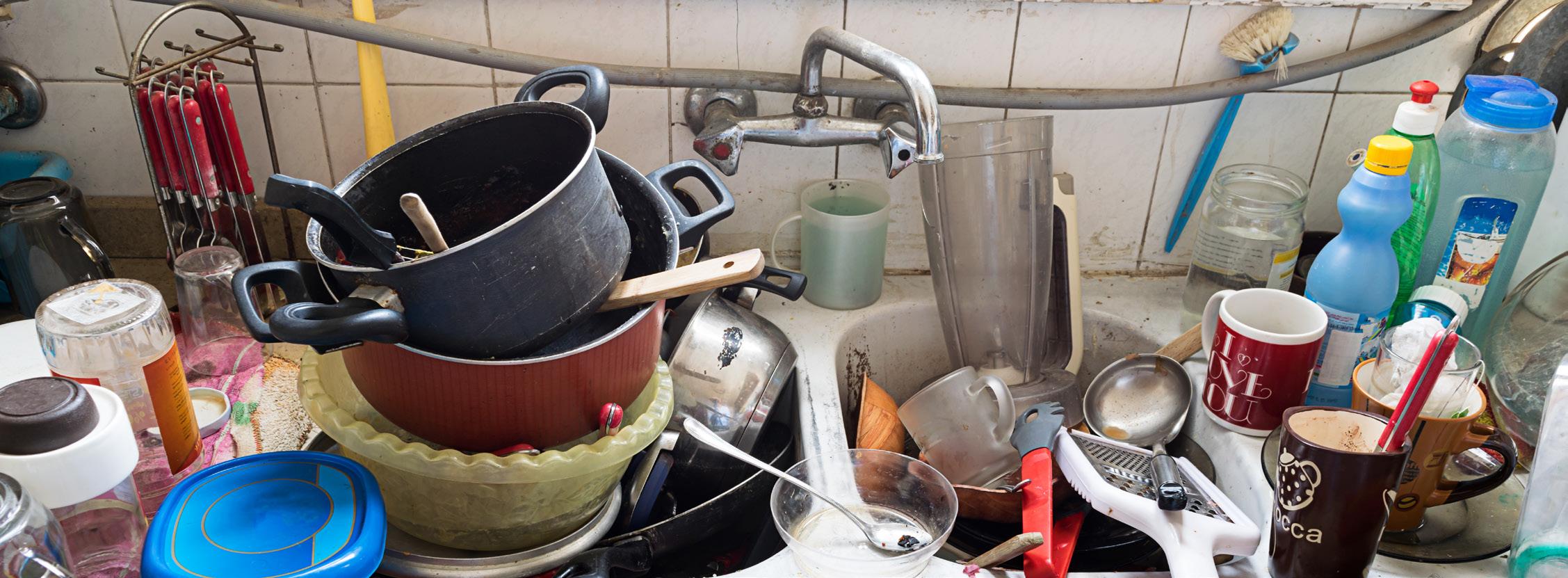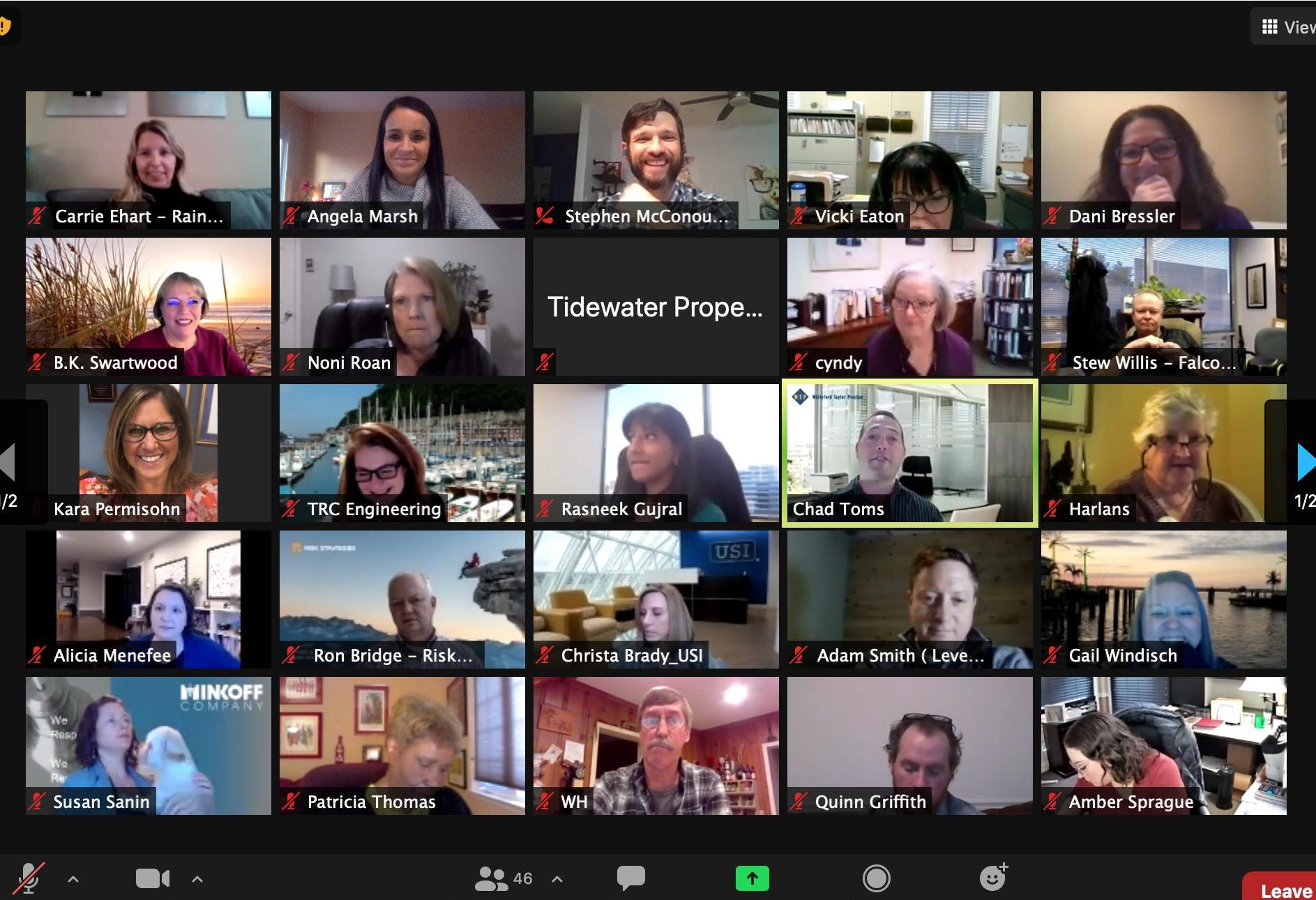
8 minute read
Hoarding and Community Associations
HOARDING
AND COMMUNITY ASSOCIATIONS
Boards of Directors and Community Managers are often faced with unique challenges which may include “hoarding,” a medical condition consisting of behaviors that often lead to unclean and unsafe environments, affecting other residents and possibly the community at large. A primary duty of the Board of Directors, working collaboratively with the Community Manager, is to oversee the common areas and to help ensure the maintenance of these areas; hoarding can compromise that goal, but there are strategies and recommendations to help protect the Association’s assets as well as the safety of residents.
Situations with residents suffering from hoarding can be difficult and delicate for the Board and Community Manager to address, in part, due to the psychological and legal facets of hoarding. However, Boards and Community Managers can achieve their goals by understanding the nature of the disorder and working with the Association’s Legal Counsel and other professionals.
What is Hoarding?
As of 2013, the American Psychiatric Association (APA) acknowledged hoarding as a legitimate and devastating mental disorder (2020). According to the APA, hoarding occurs in “individuals who have difficulty discarding items because of a strong perceived need to save items and/or distress associated with discarding” (Parekh, 2017). Hoarding will result in the accumulation of a large number of possessions that congest and clutter living areas to the extent that these areas may become unusable. People with hoarding disorder often save random items and store them haphazardly (Parekh, 2017). When hoarding becomes clinically severe, it has been linked to an increased risk of fires, falling, poor sanitation, and other health concerns (Frost et. al., 2007, p. 1468). It should be noted that hoarding is not the same as collecting. Collectors search and hold onto specific items while those who suffer from a hoarding disorder save random and obsolete items which they believe have sentimental value. Hoarding is much more widespread than earlier believed; the APA estimates that about 2–6% of the American population suffer from hoarding disorder (most prevalent in elderly adults ages 55–94). The exact causes of hoarding are uncertain, but previous brain injuries or psychological trauma can worsen symptoms. Hoarding may also stem from other mental illnesses such as OCD or depression (APA, 2020).

Warning Signs of Hoarding, Specifically within a Shared Community
The most obvious sign of moderate to extreme hoarding behaviors is an accumulation of possessions that fill, block, and clutter the living areas. Typical items include saved magazines, newspapers, clothes, books, and containers. Some hoarders collect food and allow it to spoil, creating odors that may be reported by neighbors. Unusual insect or rodent infestations can be another sign of food or refuse buildup inside a unit.
The Board and Community Managers should keep in mind that hoarding behaviors are often deliberately hidden by those suffering from a hoarding disorder. Residents frequently avoid opening their door to neighbors, visitors, and maintenance people, and they may also become reclusive as well as experience emotional distress because of the clutter. In some cases, residents may have trouble participating in their daily routines, jobs, and social activities.
Hoarding and Fair Housing Act
Due to hoarding’s designation as a mental disorder, it falls under the category of disability, meaning that hoarding is protected under the Fair Housing Act. Special accommodation must be provided by the Association when specifically asked for by the owner or the tenant. This would include allowing the person time to clean up the home and get it back to appropriate living conditions. However, if hoarding has become so extreme to the point that it poses a threat to the health and safety of others, or the behavior causes substantial property damage, this person would no longer be protected under the Fair Housing Act. Under these circumstances, an Association Board, after consultation with their Association Attorney, may deny a special accommodation if the accommodation will not minimize or eliminate the threat. It is strongly recommended that the Association Board consult with their Association Attorney before moving forward with any action regarding this issue to ensure proper procedures are taken.
Approaching Residents with Hoarding Behaviors
The most important skill that the Board of Directors and Community Manager can bring to a hoarding situation is a non-judgmental yet problem-solving mindset. Some options for handling a hoarding situation are as follows:
1Send the owner a written notice letting them know the Association is aware of the situation and that they must clean up the home as it poses a safety hazard. Be sure to give a specific time frame for compliance. Though these notices rarely seem to work, they are a necessary step in achieving resolution and documenting “proof of notice” in case legal action is required.
2The Board of Directors may suggest trying to reach out to a family member, make them aware of the situation, and ask for their assistance. If that is the case, the Board of Directors would want to consult with legal counsel prior to this action being taken.
3Many cities and towns have hoarding task forces that can offer support to the hoarder. The Board of Directors, along with the
Community Manager, may want to contact them for assistance, which could be a good first step. However, remember to consult with the Association’s Attorney prior to taking any action.
4You may ask, “Can’t the Association just go in and clean out the unit?” Many professionals agree that simply clearing out a property of its contents will not have a long-term impact on the situation, and it will likely reoccur. Behavior-based cognitive and behavioral treatments and other interventions by trained professionals can be more effective in controlling the behavior. The involvement of trained professionals to help address hoarding behaviors will help to work toward a permanent resolution to the behavioral and mental issue at play.
Hoarding and Risk-Management
Hoarding can also cause homeowners insurance claims to be denied as hazards may arise due to negligence and poor home maintenance. Below are a few of the more common risks.
1Fire Risk: Hoarding causes a cluttered environment which makes movability within living spaces extremely difficult and often cuts off access to vital exits (APA, 2017; Mayo Clinic, 2018). Should a fire start, the risk of death increases due to blocked entry and exit points which make it difficult for first responders to access a space.
2Water Damage: The hoarder’s accumulated clutter not only poses a fire risk, but also camouflages to potential water damage.
When a space is thrown into disorder due to the accumulation of clutter, many maintenance items, such as water accumulation, go unnoticed. Unseen water damage may result not only in large insurance claims for damage to the home but the insured’s possessions as well (Donnelly, 2017). In some cases, the hoarder may know that a plumbing issue exists and may know the source of the leak, but typically they will not call a plumber to fix the problem because they don’t want anyone in the home. This means water damage and plumbing issues go unresolved for extended periods of time and may cause damage to not only the owner’s home, but other units as well.
3Structural Damage: The home may be impacted with mold and/or rodent infestations that affect the structure of the home, resulting in weight bearing issues and potential structural damage.
4Physical Risk: One of the most salient risks posed by excessive hoarding is the risk of falling. Stacked and condensed stored items may become tripping hazards, and stacked items may become unstable and fall over, causing serious injury to others.

Claims Scenario
The potential for hazards caused by hoarding are not to be taken lightly as evidenced by past claims. In one event, a condominium suffered extensive damages due to a fire caused by hoarding. The fire began in the unit’s attic, and due to the increased fire load of the owner’s belongings, the fire quickly spread to other units. First responders were able to bring the flames under control and save the occupants, but it was clear that the fire was avoidable had the hoarding issue not been present.
In another instance, the home of a hoarder had severe floorboard damage due to flooding. The water damage worsened over the years, but the homeowner had no idea as their home was filled with overflowing trash bags. The intense hoarding blocked access to their kitchen and bathroom and allowed an insect and rodent infestation. The water damage to the floorboards was dangerous not only to the owner living in the home, but also to anyone living in units underneath.
These examples are a reminder that hoarding can easily turn into an issue that affects not only the unit’s owner but those around them as well. So watch for signs of hoarding and search and use available resources to actively manage cases. Your community’s health and safety may well depend on your actions.
References
American Psychiatric Association. (2020). Help With Hoarding
Disorder. https://www.psychiatry.org/patients-families/ hoarding-disorder Bratiotis C., Otte, S., Steketee, G., Muroff, J., & Frost, R. O. (2009).
Hoarding Fact Sheet. International OCD Foundation. https://iocdf. org/wp-content/uploads/2014/10/Hoarding-Fact-Sheet.pdf Donnelly, K. (2017, August 30). The Dangers of Hoarding. Clutter
Hoarding Cleanup. https://www.clutterhoardingcleanup.com/ resources/hoarding/dangers-hoarding Frost, R. O., Tolin, D. F., & Steketee, G. (2007). An open trial of cognitive-behavioral therapy for compulsive hoarding. Behaviour
Research and Therapy, 45(7), 1461–1470. https://doi.org/10.1016/j. brat.2007.01.001 Mayo Clinic. (2018, February 3). Hoarding disorder—Symptoms and causes. https://www.mayoclinic.org/diseases-conditions/hoardingdisorder/symptoms-causes/syc-20356056 Parekh, R. (2017, July). What is Hoarding Disorder. Https://Www.
Psychiatry.Org/Patients-Families/Hoarding-Disorder/What-Is-
Hoarding-Disorder. https://www.psychiatry.org/patients-families/ hoarding-disorder/what-is-hoarding-disorder PuroClean. (2019, February 21). How Hoarding Affects Your
Homeowners Insurance. PuroClean Restoration Cleaning. https:// www.puroclean.com/jacksonville-fl-puroclean-restorationcleaning/blog/how-hoarding-affects-your-homeownersinsurance/#:%7E:text=Water%20Damage%20%E2%80%93%20
Because%20of%20the,leaks%20can%20worsen%20the%20damage
Written by: Sami Satouri, RHU®, ChHC®, President of Quest Insurance 703-961-8886 ssatouri@questinsurance.us
And Anna Novak, Senior Move Manager® & owner of HomeTransitionPros.com
And the Chesapeake Chapter Newsletter Committee





